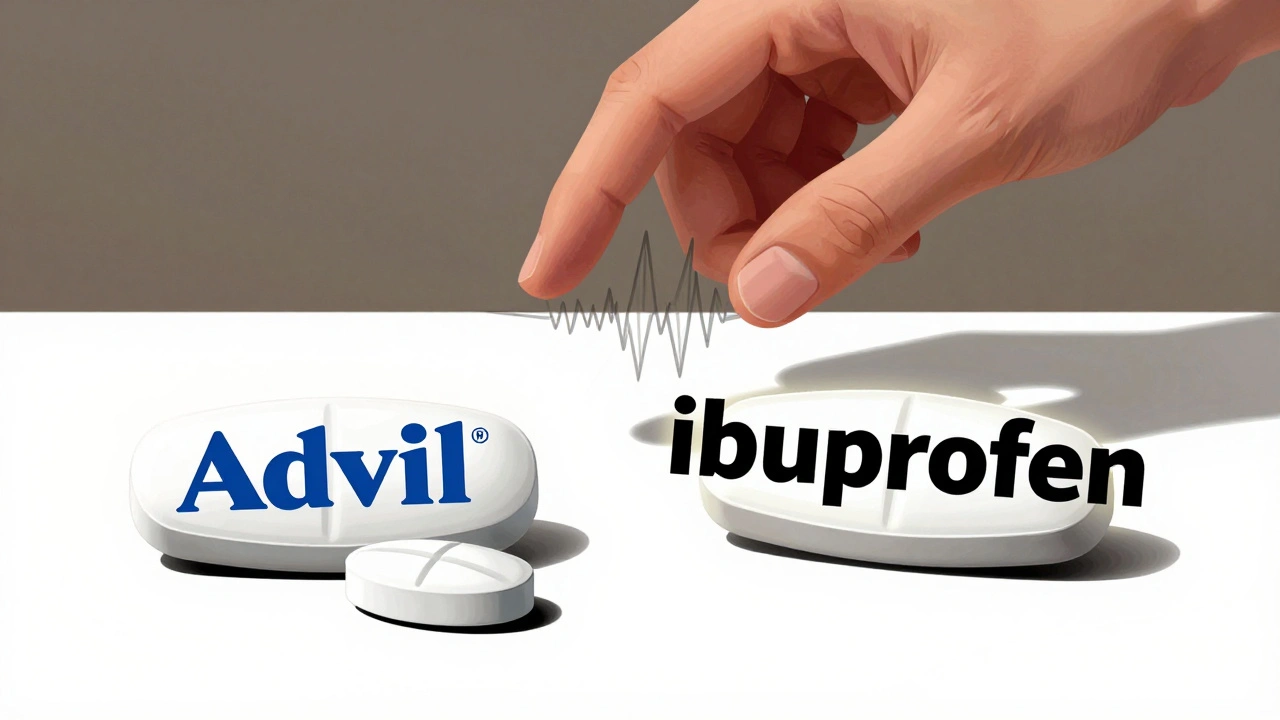If you’ve ever winced at getting out of bed thanks to stiff joints—or dealt with a nagging ache that refuses to quit—there’s a good chance you’ve heard about Celebrex. This isn’t just another pain pill. Approved by the FDA in 1998, celecoxib (the generic name for Celebrex) holds a unique spot among prescription painkillers. It promises relief for the inflammation and pain that cripple millions, especially those dealing with arthritis. But here's the kicker: people still argue about how safe it really is. Some swear by it, while others worry about the potential risks. If you’re staring down a bottle of Celebrex, wondering what it’ll really do to your body, you’re not alone. Let’s get straight into the facts, the science, and the real-life tips you need.
What Is Celebrex and How Does It Actually Work?
Forget those technical explanations overloaded with jargon. Here’s the deal: Celebrex is a nonsteroidal anti-inflammatory drug, or NSAID for short (like ibuprofen and naproxen, only a little different). Where most NSAIDs tackle both COX-1 and COX-2 enzymes—tiny chemical workers behind pain and swelling—Celebrex targets COX-2 more precisely. COX-2 shows up mainly when there’s inflammation, so by quieting this enzyme, Celebrex can soothe pain without beating up your stomach lining quite as much as older drugs do.
Doctors commonly prescribe Celebrex for three things: osteoarthritis, rheumatoid arthritis, and menstrual pain. It’s also used—sometimes off-label—for ankylosing spondylitis and certain chronic pain conditions. According to data from the National Center for Health Statistics, osteoarthritis affects over 32.5 million adults in the U.S. alone. A huge chunk of those folks end up using NSAIDs at some point. Celebrex stands out because of its lower risk for stomach ulcers, which have haunted patients on traditional NSAIDs for decades.
But how does that work in real life? Imagine you’re struggling with knee pain from arthritis. Traditional NSAIDs would help but could upset your stomach or even cause bleeding after months of use. Studies published by the American College of Rheumatology in 2023 showed that Celebrex cut down on bleeding risk by up to 50% compared to older options. That’s a big deal for seniors or anyone with a history of ulcers.
Here’s another nugget: Celebrex comes in different dosages—usually 100mg to 200mg, taken once or twice a day, depending on what you’re treating. Taking it with food might lower your risk of stomach upset, although the drug’s special COX-2 targeting makes that less common.
Check out this quick table with some stats about Celebrex use and arthritis treatment in the U.S.:
| Condition | Estimated # Using Celebrex (US) | Typical Dose |
|---|---|---|
| Osteoarthritis | 4.1 million | 200 mg/day |
| Rheumatoid Arthritis | 1.7 million | 200–400 mg/day |
| Acute pain (e.g. menstrual) | 530,000 | 400 mg first dose, then 200 mg if needed |
One thing to remember: this drug doesn’t cure arthritis, and it doesn’t rebuild cartilage. It just takes the edge off daily pain so you can move around without wincing. If you stop, the pain will likely creep back in.
But what about mixing Celebrex with other meds? That’s where you need to be careful. Some drugs, like certain blood thinners (warfarin), can be risky to use alongside Celebrex—since both can affect bleeding. Same goes for ACE inhibitors and some blood pressure meds, which might not work as well if you add Celebrex to the mix. Always check with your doctor or pharmacist before combining meds—don’t just wing it based on what you’ve read online.

What You Should Know About Celebrex Side Effects and Safety
Here’s the truth: no painkiller comes without risks, and Celebrex is no exception. Even with its selective targeting of COX-2, side effects can pop up—some minor, some more serious. Most users handle it just fine, but stories about heart attacks and strokes have made headlines. What gives?
The original buzz around Celebrex was all about fewer stomach problems, but in the early 2000s, studies started flagging an increase in heart-related risks—especially at high doses or long-term use. One big study from the Cleveland Clinic’s Dr. Steven Nissen, published in the New England Journal of Medicine, shook things up in 2005. It found that high-dose celecoxib doubled the risk of major cardiovascular problems compared to a placebo. That led the FDA to add a ‘black box warning’—the sort of bolded warning label you never want to see—about heart and stroke risks.
But here’s where things get murky: follow-up data suggests these risks might only show up in people already at higher risk, like those with heart disease history or high blood pressure. If you’re otherwise healthy and take the standard dose, your extra risk seems pretty minimal. Still, doctors are more cautious about giving Celebrex to people with any cardiovascular red flags.
- Common side effects: Upset stomach, diarrhea, headache, upper respiratory infections, swelling in the legs.
- Serious side effects (less common): Increased blood pressure, kidney problems, liver dysfunction, allergic reactions (like skin rashes and swelling).
- Warning signs you shouldn’t ignore: chest pain, sudden shortness of breath, slurred speech, swelling in the face or throat.
If you experience any of those serious symptoms, go to the ER, don’t just Google it.
One more thing about safety—make sure to avoid alcohol if you can when taking Celebrex. The combo can put more stress on your stomach and kidneys. People with a history of asthma or allergic reactions to sulfa drugs should avoid it, since Celebrex has a sulfonamide structure. Not everyone realizes this, so always double-check your allergy history before filling that prescription.
When it comes to kids, Celebrex is FDA-approved for juvenile rheumatoid arthritis in kids aged 2 and up, but only under strict doctor supervision. For pregnant women, Celebrex is a no-go after 20 weeks, because it can cause problems for the developing fetus (especially concerning the kidneys). It’s one of those details people sometimes miss, because it only applies in later pregnancy, not the earliest stages.
Don’t share your prescription. What works safely for you might cause trouble for someone else, especially if there are underlying health problems you don’t know about.
If you want to play it safe, keep these tips in mind when taking Celebrex:
- Stick to the lowest dose that still works for you. Don’t up your own meds if it stops working—talk to your doctor first.
- Take it with food or milk if you get an upset stomach, even though it’s less likely compared to other NSAIDs.
- Stay hydrated, since NSAIDs can hit your kidneys pretty hard if you’re dehydrated.
- Don’t mix with other NSAIDs (like ibuprofen or aspirin) unless your doctor okays it. You don’t want to double-up on side effect risk.
- Tell your healthcare provider if you have (or once had) heart issues, high blood pressure, liver or kidney disease, or stomach ulcers—even if they seem ‘cured’ now.
And hey, if your doctor won’t prescribe you Celebrex for a reason, ask why. Understanding the logic can save you plenty of trouble down the road.

Practical Tips and Lesser-Known Facts About Celebrex
You’d be surprised how much small changes can make this drug work better—or cause more harm—without you even realizing it. Sure, it sounds basic, but timing, food, and other meds all make a difference. Here’s what you won’t always find printed on that folded-up leaflet inside the box.
For starters, timing matters. Most people take Celebrex once or twice a day at the same time daily, but if you forget a dose, take it as soon as you remember—unless it’s almost time for the next one. In that case, skip the missed pill rather than double up, which just adds to your side effect risk.
Celebrity endorsements? Don’t buy into them. While you’ll find stories about athletes using Celebrex for knee injuries, their experiences don’t always match up to most people living with chronic pain. Plus, these folks have medical teams tracking every single pill. Use your own judgment, not just what worked for someone on TV.
A cool thing about celebrex is how it stacks up price-wise. Back when Pfizer’s patent was strong, Celebrex was pricey—sometimes $200 per month or more. Since generic celecoxib hit the shelves in 2014, costs have plummeted to as little as $15 per month with certain insurance plans or discount cards. So, if you’re shocked by a high co-pay, ask the pharmacy if they stock the generic.
Now, let's talk about combining Celebrex with lifestyle tweaks. Don’t expect magic from just the pill. People who use NSAIDs and also stick to physical therapy, weight loss (if needed), or special joint exercises see far better results. That’s partly because loading up on NSAIDs day after day—without tackling the cause—can just mask worsening joint problems until it’s too late for less invasive treatments.
Did you know there’s research suggesting Celebrex might play a role in cancer prevention, especially for people with certain genetic conditions like familial adenomatous polyposis (FAP)? Scientists at the University of Texas found celecoxib could reduce the growth of colon polyps in people with FAP by around 28%. Don’t get too excited though—this isn’t a green light for everyone to use Celebrex as a cancer preventative, but it shows this drug’s anti-inflammatory powers have some surprising ripple effects outside of pain relief.
Here are some extra hacks for getting the most out of your Celebrex treatment:
- Keep a pain diary. Jot down when you feel best or worst after dosing. This helps your doctor adjust your plan and spot patterns you might miss.
- If you’re ever scheduled for surgery, let the surgical team know you’re on Celebrex. It can affect bleeding and healing, especially if used with blood thinners.
- Store your meds at room temperature, never in a steamy bathroom cabinet—that humidity can break down the tablets over time.
- Ask your pharmacist about potential drug interactions with any new supplement, even herbal or over-the-counter stuff. St. John’s Wort and ginkgo, for example, mess with many prescription meds.
- If you’re traveling, keep Celebrex in the original bottle with your prescription label. Airports are picky about loose pills, and you don’t want security drama on vacation.
Lots of people wonder about long-term effects. If you take Celebrex for months or years, regular blood tests are smart—especially kidney function and liver enzymes. These let your doctor catch problems early, often before you feel any symptoms. Don’t wait until you’re dizzy or sick to get labs checked.
Ever heard of the placebo effect with pain meds? Up to 30% of pain relief in clinical trials comes from people simply believing the pill will help. Celebrex beats the placebo in every good study, but don’t underestimate the power of routines, positive thinking, and the right support system. Sometimes, what’s happening in your head changes your actual experience of pain more than you realize.
Lastly, question what you see on the internet. Reddit, Facebook groups, and forums can give useful tips, but also bad advice that’s not safe for everybody. Use those stories to spark questions with your own doctor, never as a substitute for care.
Dealing with chronic pain or arthritis means making choices every day. Celebrex has earned its place as a go-to option for many, not because it’s a miracle drug—but because it helps millions live fuller lives, when used responsibly. But, like any tool, using it smart makes all the difference. Know what to expect, be ready to say something if you feel off, and stick with what’s been proven to work. That way, you can focus less on pain and more on what you love doing.







William Nonnemacher
May 28, 2025 AT 05:39Celebrex is just another over‑promoted NSAID; the hype outweighs the real benefit.
Alex Ramos
May 28, 2025 AT 14:00Listen up-Celebrex, marketed as the “miracle” NSAID; it targets COX‑2, reduces stomach risk, yet it carries a hidden cardiovascular price tag-read the fine print, question the claims, and don’t be fooled!
Mita Son
May 28, 2025 AT 23:43Oh my god, I swear I read that celecoxib can actually SAVE your joints-well, maybe not SAVE, but at least it can KEEP the pain at bay, lol! But u gotta watch out for those heart scares, ok?
ariel javier
May 29, 2025 AT 09:26It is incumbent upon clinicians to scrutinize the pharmacologic profile of celecoxib; the purported gastrointestinal safety does not absolve the practitioner from acknowledging the appreciable cardiovascular hazards inherent in its chronic administration.
Bryan L
May 29, 2025 AT 19:10Hey there, I totally get how frustrating chronic joint pain can be 😊. If you decide to try Celebrex, just keep those doctor visits regular and let them monitor your heart and kidneys 💪.
joseph rozwood
May 30, 2025 AT 04:53While your brevity is noted, one must appreciate the nuanced pharmacodynamics at play; indeed, celecoxib’s selective COX‑2 inhibition is a marvel of modern medicinal chemistry-though I suspect you missed the point entirely.
Richard Walker
May 30, 2025 AT 14:36I see where you’re coming from, but let’s not forget cultural variations in prescribing habits; some patients truly benefit from the reduced ulcer risk, and that’s worth acknowledging.
Julien Martin
May 31, 2025 AT 00:20From a mechanistic standpoint, celecoxib’s inhibition constant (Ki) for COX‑2 is markedly lower than for COX‑1, conferring a therapeutic index that mitigates gastric mucosal injury while preserving anti‑inflammatory efficacy.
Jason Oeltjen
May 31, 2025 AT 10:03Honestly, playing saint with your morals won’t change the fact that any drug that meddles with prostaglandin pathways is a double‑edged sword, and we must speak out against complacency.
Mark Vondrasek
May 31, 2025 AT 19:46Oh great, another Reddit thread about Celebrex, because we obviously needed a deep dive into another NSAID.
First off, the drug’s selective COX‑2 action is touted as a breakthrough, yet the hype machine ignores the subtle increase in cardiovascular events.
You’ve probably heard the marketing spiel about fewer stomach ulcers, but the data shows that high‑dose regimens can double the risk of heart attacks.
Don’t be fooled by glossy pamphlets; the black‑box warning exists for a reason.
If you’re already taking blood thinners, adding Celebrex is like inviting a mischievous gremlin to a delicate chemistry set.
And let’s not forget the kidney concerns-dehydration plus NSAIDs equals a recipe for acute renal failure.
You might think taking it with food solves everything, but the drug’s pharmacokinetics aren’t that naive.
Sure, the generic version is cheap, but cheap doesn’t mean harmless.
I’ve seen patients who swear by it, only to end up in the ER with unexplained swelling and shortness of breath.
The irony is that many physicians prescribe it without a thorough cardiovascular risk assessment.
Meanwhile, the pharmaceutical lobby pushes for broader indications, even hinting at cancer prevention, which is a stretch at best.
If you’re hoping for a miracle cure, you’re better off looking at physical therapy and lifestyle changes.
Remember that the placebo effect can account for up to a third of reported pain relief.
So, before you pop another pill, ask yourself if you’re treating the symptom or masking the underlying problem.
In the end, the safest route is a balanced approach: minimal dose, regular monitoring, and a healthy dose of skepticism.
And if all that sounds like a lot, maybe it’s time to reconsider whether any NSAID is worth the gamble.
Joshua Agabu
June 1, 2025 AT 05:30Celebrex works for some, but it isn’t a universal fix.
Lolita Rosa
June 1, 2025 AT 15:13The truth is, if you’re proud to pop a pill without reading the label, you’re betraying our nation’s health standards.
Matthew Platts
June 2, 2025 AT 00:56Hey, don’t lose hope-if Celebrex helps you get moving, that’s a win, just keep an eye on any side effects.
Matthew Bates
June 2, 2025 AT 10:40According to the FDA’s prescribing information, celecoxib should be administered at the lowest effective dose, with periodic assessment of cardiovascular risk factors.
Kasey Mynatt
June 2, 2025 AT 20:23Listen, I’m not here to lecture you; just remember to take it with food, stay hydrated, and report any unusual swelling to your doctor-you’ve got this!
Edwin Pennock
June 3, 2025 AT 06:06Everyone’s quick to praise Celebrex, but the real story is that the data is cherry‑picked; you should question the narrative before committing.
John McGuire
June 3, 2025 AT 15:50🎉 Congrats on starting Celebrex! 🎉 Just keep a pain diary, stay active, and remember to schedule those labs-your future self will thank you! 🌟
newsscribbles kunle
June 4, 2025 AT 01:33It is a moral imperative to expose the hidden agenda behind the pharmaceutical push for Celebrex; only through vigilant scrutiny can we protect the unsuspecting masses from covert corporate manipulation.
Bernard Williams
June 4, 2025 AT 11:16As a seasoned pharmacist, I recommend coupling Celebrex with a structured exercise program and regular blood pressure checks to maximize benefit while minimizing risk.
Michelle Morrison
June 4, 2025 AT 21:00Some say Celebrex is harmless, but they ignore the secret studies hidden by big pharma that link it to hidden heart threats-trust the data, not the hype.